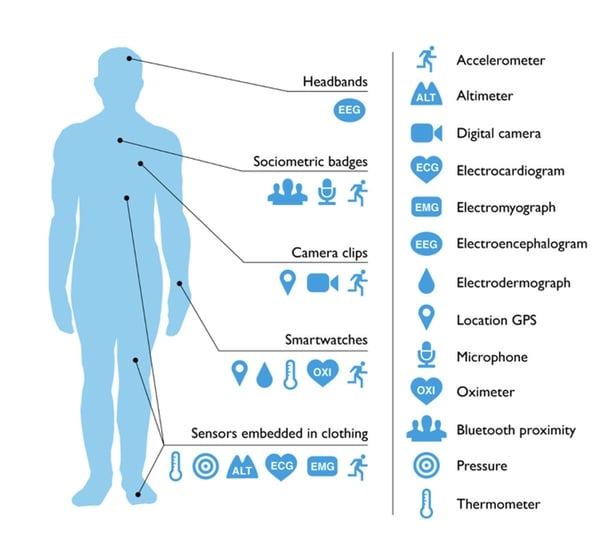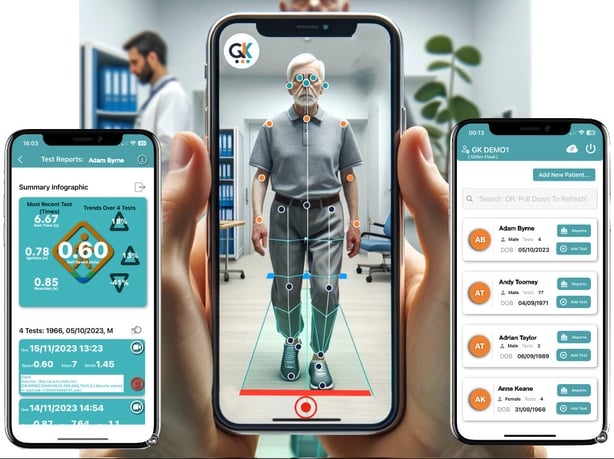Analysis: Your gait is a fundamental clinical measure of your health, including future changes in cognitive and emotional health
This article is now available above as a Brainstorm podcast. You can subscribe to the Brainstorm podcast through Apple Podcasts, Stitcher, Spotify or wherever you get your podcasts.
In healthcare settings, how a person walks is often referred to as their gait. One of the simplest measurements of your gait is walking speed. It is a fundamental clinical measure and has gained traction because walking speed can be a strong indicator of health and functional status and helps in assessing the risk of falls, mobility limitations and overall health status. Its validity, reliability and sensitivity render it an essential tool in clinical settings.
When reviewing your health, the way you walk reflects your medical history. Had a hip operation? It will show in the way you walk. Jimmied your knee playing football? Well, that too will show in your walk. From a medical point of view, gait speed can be a key part of assessing and reviewing your physical health.
In fact, beyond physical changes, gait is also predictive of changes in your cognitive and emotional state. Some of the biggest health issues facing world health are indicated by changes in your gait speed over time and could indicate the early signs of Alzheimer's, Parkinson's and diabetes. For these reasons, gait is sometimes described as the 6th vital sign, after body temperature, pulse, rate of breathing (respiration), blood pressure and the oxygen levels in your blood.

You might think then that gait measurement would be used every day in every corner of the health system. Walking speed is simply the distance walked divided by the time taken. Simple right?
But objectively measuring gait (and even gait speed) in clinical settings is difficult. To understand why, ask yourself the following questions. What distance should we measure? Should we include the time it takes to get moving forward from rest? How do we ensure the correct start and stop times are recorded?
Technology based solutions such smart watches, or sensors that measure activity, step counts, and distance offer significant improvements over simply observing the person walking. However, these wearable technologies can often introduce new problems, such as placement of the sensors, the accuracy of the smart watch and storage and ownership of the data collected.

Consultant Geriatrician at Tallaght University Hospital Prof Sean Kennelly notes that "gait analysis in clinical settings has been very limited up to now, not because it is not important, but mainly to the expense, inaccuracies, high level of training required and the space that equipment takes up."
Imagine being able to accurately measure how you walk in a variety of locations, perhaps by different clinical teams. Being able to repeat tests, after three months, six months or annually. Being able to compare these measurements is critical in informing and allowing medical professionals to assess and diagnose any changes or issues. This is what we call a digital gait assessment or a digital gait lab.
Doctors at Tallaght University Hospital believe that having walking speed assessments in regular clinical practice can significantly enhance patient care by providing a clear and objective measure of an individual's functional abilities and overall health status. For patients with chronic diseases such as Parkinson's disease, multiple sclerosis or arthritis, walking speed serves as an indicator of disease progression and response to treatment.
From Tallaght University Hospital, Prof Seán Kennelly explains how the GaitKeeper digital gait lab works
Further measurements beyond walking speed are also needed. Support base, swing and symmetry measures can be used to gauge frailty status – identifying increased risks of adverse events such as falls, prolonged hospital stays and overall functional decline.
Dr. Paul McElwaine, Consultant Geriatrician at Tallaght University Hospital, says "international guidelines have always recommended the importance of gait speed as an important indicator of someone's risk of falling, but for lots of reasons this has been significantly challenging to implement in clinical settings. Allowing for easy and accurate measurement of gait speed in falls clinics and acute care settings, means we can focus resources on those most in need to prevent future falls."
How a digital gait lab works
In Tallaght University Hospital, specialists in the care for older people use gait and gait speed measurements supported by an AI-based technology platform called GaitKeeper. These tests and assessments are used to inform the medical teams whose focus is the prevention of illness and where detected, the care and treatment of that illness.
A digital gait lab needs to deliver objective measurements in the widest range of locations, be fast and easy to use. Using research from Dublin City University, new AI and augmented reality technologies can now capture over 20 points on a person’s body, 60 times per second as they walk, just by recording a video of the person walking. Gone is the need for specialised equipment like sensors, mats or special clothing. The assessments can be done in nursing homes, GP practices, outpatient clinics, on hospital wards, and even in someone’s own home.
The way we walk provides 'tell tale’ signs about our past, present and future lives. Technological advances in AI, coupled with clinician research and know how have come together to take a step into the future. As William Shakespeare wrote in Julius Caesar, "I do know him by his gait. He is a friend."
Follow RTÉ Brainstorm on WhatsApp and Instagram for more stories and updates
The views expressed here are those of the author and do not represent or reflect the views of RTÉ


